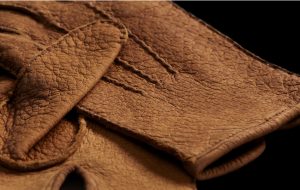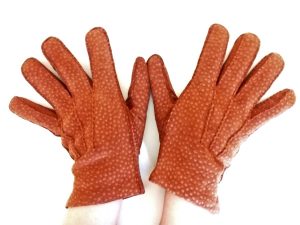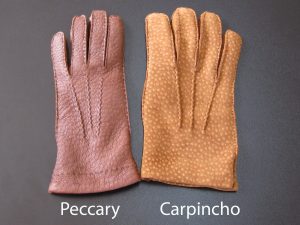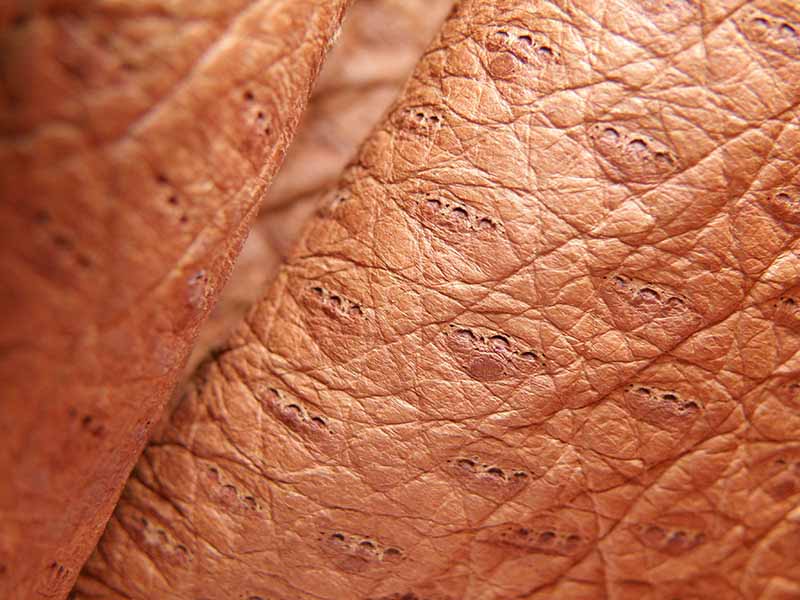There are too many types of leathers in the market. From cowhides to exotics, all of them have five classifications: Full grain or top grain leather, corrected or embossed grain, split suede, nubuck suede grain and, reconstituted, bonded or fiber leather. Today we are going to talk about two exotic leather that are very similar in appearance but also they couldn’t be more different between them. Let’s see the differences between Peccary and Carpincho leathers but first let us explain a bit about them so you can choose between peccary leather vs carpincho leather by the end of this post.
Peccary Leather

Peccary, as we have said in previous blogs, is one of the softer and rarest materials found in the market and it is widely used in the glove making. This type of leather is derived from the peccary animal, which is part of the pig family and the best quality skins come from Peru, where they are harvested under strict CITES regulations.
These animals are wild and lived in the jungle, which means their leather will have little scuffs and marks and they shouldn’t be seen as defects but as a sign of quality and wild origin. Also, genuine peccary leather has very characteristic 3-prong pores that can be visualized at simple sight.
This leather is soft and spongy and its ideal for gloves but it also can be used in shoes, garments and small accessories. Other characteristics are their durability and flexibility. Glove makers around the world prefer this leather for their gloves and the most skilled artisans hand sew them to make the most perfect pair of luxury gloves.
Peccary leather can be resewn over and over again, and it will likely never get destroyed with regular use. A fun fact about this leather is that the more that you wear it the softer it grows.
Carpincho Leather (also called Capybara leather)

Carpincho is a large South American rodent. The leather that comes from this animal is very similar in appearance to peccary leather and its also used in luxury products like gloves.
The name carpincho is Portuguese, and it refers to a swamp-dwelling animal that is known as the world’s largest rodent. The Spanish name for this animal is capybara, and this is probably its most common name in English, as well. This semi-aquatic species is found only in parts of South America including north Argentina, some parts of Brazil and Paraguay. Some of the best specimens are found in Argentina.
While the capybara is not endangered, hunting them is illegal in Argentina. They are raised on farms and only certified farm-raised carpincho hides are legally used for making leather.
Between its characteristics, we have the softness and supple feeling to the hands but, this softness its only obtained after the leather is being sanded a couple of times. It is delicate to the touch but is also very durable. The skin resembles a soft-grained, brown-speckled suede. Due to the rigorous life of the capybaras raised on farms, the leather may feature natural markings and scars from fights between capybaras. These are a sign of real leather and enhance the beauty of the product. The distinguishing feature of carpincho is the bundle of 5-6 bristle pores that dot the surface, as opposed to the 3 follicles of peccary leather.
Peccary Leather Vs Carpincho Leather

Because of their similarity in appearance, carpincho and peccary are often compared and confused by the most naive buyers. Like peccary, carpincho also has visible follicle pores on the skin which makes the leather very recognizable. You can distinguish them like this: Peccary has 3 follicle pores visible in a row while carpincho has 5-6 visible pores.
Both types of leather are very luxurious, durable and flexible and also, both are perfect for high-end gloves and other small accessories like wallets, keychains, etc.
Peccary is expensive than Carpincho because of the strict regulations to obtain them and because carpincho is less fine than peccary.
Remember that you can find the best peccary leather here at our company and that we only sell skins obtained from subsistence hunting and certified with CITES.

